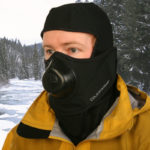When training sports athletes, I generally put them into two modes of training depending on what part of the season they’re in. For off-season the trend is toward high volume, low intensity shifting to low volume, high intensity during the season. The same principle works whether you’re a bodybuilder, ball player, or other athlete; it even works for the average fitness buff.
Let’s concentrate on high volume training, which you should do every once in awhile because it will shock your system and generally help you overcome a plateau.
High volume training is a style of training that involves working out for extended periods of time, performing a high number of reps and sets, or both. As an example, you may perform 10 sets of 10 reps for a particular exercise, 8 sets of 8 reps, etc. Generally, a high-volume workout is associated with a bodybuilding split routine, but full-body workouts also can be high volume.
For bodybuilders, this style of training began back in the day as it were with Arnold Schwarzenegger, Reg Park, Franco Columbo and others. While there are some that minimize this type of training, like all other training regimens, there is a place for it and, it works well.
It is common during high-volume workouts for a strong athlete to lift 70,000 pounds or more in one workout session. Even during the old days Arnold Schwarzenegger’s routine evolved into a system where muscle groups were worked 3 times per week in which he would lift about 90 sets of each major muscle group per week. Talk about no pain, no gain.
To this day, high-volume training resembles what Arnold did. But, just like Arnold, it is not a program that you stay on week after week. Try it for a couple of weeks and move onto other regimens.
Generally, high-volume training is broken into two part: time and sets. A high-volume regimen requires about 120 minutes of workout time not including rest. Thus, when you go to the gym it’s about a 1.5-2 hour process. In terms of sets, a high-volume workout is about 20-30 sets per body part.
The reason you do not wish to do high-volume training all the time is because once you surpass about an hour of workout time, you can begin to cannibalize muscle mass, which is why this type of training is not good for natural bodybuilders or athletes long-term and exactly why you do it only for 1-2 weeks to shock your system. And again, as stated above, move on to other regimens. If you are a beginner, I would discourage you from using high-volume unless you have near perfect technique. It takes discipline and persistence. Done correctly, a high-volume daily workout regimen is exhausting. Besides, you should remember that the initial shock that comes from undertaking a weight training routine, and the resulting anabolic boost, outweighs the limitations of the training system.
For my clients and athletes, I limit the rest period between sets to maximize time efficiency, which shortens the workout and makes high-volume training more viable for training for longer periods if you wish.
Before you begin a high-volume routine, let’s set a few basic rules. When we talk volume and intensity in strength training, “volume” refers to how many reps or sets are performed, and “intensity” indicates how the weight load, i.e., the greater the weight the more the intensity. This also can be expressed as a relative percentage of your maximum capability. For example, if you can do only one repetition at 300 pounds, then 150 pounds represents 50% of your one-rep maximum (1RM).
Thus, it stands to reason that when you perform 10 sets of 10 reps for any body part that the weight you’ll be lifting is much less than you may under normal circumstances. Warm up first with each body part then, start with about 30-40 percent of your maximum weight load(s).
As a rule of thumb following is my definition in terms of sets/reps for use during high-volume training.
Very-high volume: 36-plus sets
High volume: 25 to 35 sets
Medium volume: 12 to 24 sets
Low volume: 4-10 sets
Also, I typically have my athletes, bodybuilders, and other use the greater number of sets/reps for the smaller muscles. As an example, a bicep curl may be done 10-12 sets for 20-12 reps while a leg workout would be 8 sets of 8 reps. However, there is no magic number; you can work any body part for the highest reps/sets. It’s really about being smart and listening to and feeling your body.
In a very real sense, you’re doing a trade-off between neural and metabolic process in the body depending on which type of workout you perform. Further, I’m not a believer in the ‘one set to failure’ methods since I train competitive athletes and special operations groups in military fitness in addition to the average person or bodybuilder, you need to simply perform, all the time, not some of the time.
Briefly, no one type of training works for you all the time thus, you need to mix it up. So, let’s give you a routine for two weeks that’ll push you. Afterward, go back to your other regimen(s).
Letting the scientist come out in me, I do not believe in reducing periodization, which has been around the bodybuilding and athletics scene for about 20 years. I’ve found through constant monitoring of athletes that alternating periodization generally works better and research from Europe and Russia confirms that or, their research supports my own experiences in this area. Thus, do not do linear, but alternating periodization, if you work with periodized programs, which many have no idea what they are or how to design them.
Alternating periodization in high-volume workouts would look something like the following:
Sets per Workout; Reps per Workout; Week(s) of Workout (respectively)
20-25; 12-15; 1-3;
10-15; 6-8; 4-6;
15-20; 10-12; 7-9;
10-12; 5-10; 10-12;
As you can see, periodized workouts have rest built into them. Also, count only the work sets in the total, not warm-up sets.
Now that you are ready, the short program below (designed from our ‘my workout’ program on the homepage, is only for two weeks and thus, not long enough to appear as the alternating periodization schedule above. Also, no cardio, weak area, or other exercises were added. However, you can see that you’ll need to eat your Wheaties. Enjoy.
Week: 1 Day: Mon
Warmup Exercises – 3 sets for 8 reps per exercise unless otherwise noted.
In-Place Squats (no wt.)
Glute Ham Raises
Jump Rope (2 min. x 3)
Core Exercises; Reps per Set
High Pulley Curls; 12/ 12/ 12/ 10/
Seated Dumbbell Triceps Extensions; 12/ 10/ 10/ 10/ 10/
Close_Grip Bench Press; 12/ 12/ 12/ 10/ 10/
Incline Press; 15/ 10/ 10/ 10/ 10/ 10/
Dumbbell Flys; 10/ 10/ 10/ 10/
Standing Leg Curls; 12/ 12/ 12/ 12/ 12/ 15/
Machine Adductions; 15/ 12/ 12/ 10/
Warm-Down Exercises
Dumbbell Slings 3 sets X 7 reps
Bicycle Crunches 3 sets X 8 reps
Lunges 3 sets X 9 reps
Week: 1 Day: Tue
Warmup Exercises – 3 sets for 8 reps per exercise unless otherwise noted
In-Place Squats (no wt.)
Toe Touches
Jogging (5 min.)
Core Exercises; Reps per Set
Close-Grip Lat Pulldowns; 15/ 15/ 15/ 12/
Deadlifts; 12/ 12/ 12/ 12/ 12/ 10/
T-Bar Rows; 12/ 10/ 10/ 10/ 10/ 10/
Bridging; 12/ 10/ 10/ 10/ 10/ 10/
Seated Press (bar behind neck); 12/ 12/ 10/ 10/ 10/
Bent-Over Lateral Raises; 12/ 12/ 12/ 12/
One-Arm Dumbbell Press; 15/ 15/ 12/ 12/ 12/ 12/
Warm-Down Exercises
Mountain Climbers (1 min.)
Broomstick Twists 3 sets X 8 reps
Front Split Stretch 3 sets X 12 seconds
Week: 1 Day: Wed
Warmup Exercises – 3 sets for 8 reps per exercise unless otherwise noted
Split Squats
Glute Ham Raises
Dumbbell Slings
Core Exercises; Reps per Set
One-Arm Dumbbell Tri Extensions; 15/ 15/ 15/ 12/ 12/ 12/
High Pulley Curls; 12/ 12/ 12/ 12/
Dumbbell Flys; 15/ 12/ 12/ 12/
Barbell Pullovers; 15/ 12/ 12/ 12/ 10/
Incline Press; 12/ 12/ 12/ 12/ 12/ 12/
Seated Barbell Calf Raises; 12/ 10/ 10/ 10/ 10/ 10/
One-Leg Toe Raises; 12/ 12/ 12/ 12/
Warm-Down Exercises
Dumbbell Slings 3 sets X 7 reps
Broomstick Twists 3 sets X 9 reps
Front Split Stretch 3 sets X 12 seconds
Week: 1 Day: Thu
Warmup Exercises – 3 sets for 8 reps per exercise unless otherwise noted
Standing Leg Curl
Glute Ham Raises
Dumbbell Slings
Core Exercises; Reps per Set
Triceps Extensions; 15/ 15/ 15/ 12/ 12/
Seated EZ-Bar Triceps Extensions; 12/ 12/ 12/ 12/
Preacher Curls; 15/ 15/ 15/ 12/ 12/
Chin Ups; 12/ 12/ 8/ 8/ 8/
Seated Barbell Calf Raises; 15/ 15/ 15/ 12/ 12/
Hack Squats; 12/ 12/ 12/ 10/ 10/
Angled Leg Press; 12/ 12/ 12/ 12/ 10/
Front Press; 12/ 10/ 10/ 10/ 12/ 12/
Nautilus Lateral Raises; 12/ 12/ 12/ 12/ 12/ 12/
Bent-Over Lateral Raises; 12/ 12/ 8/ 8/
Warm-Down Exercises
Mountain Climbers (1 min.)
Step Ups (no wt.) 3 sets X 9 reps
Relaxation (any type) 3 sets X 12 seconds
Week: 1 Day: Fri
Warmup Exercises – 3 sets for 8 reps per exercise unless otherwise noted
Front Dynamic Kicks
Sit Ups
Biking (5 min.)
Core Exercises; Reps per Set
Hyperextension; 12/ 12/ 12/ 12/ 12/
Dumbbell Bench Press; 15/ 15/ 12/ 12/ 12/
Decline Press; 12/ 12/ 12/ 12/ 12/ 10/
Dumbbell Pullovers; 10/ 10/ 10/ 10/ 10/
Low Pulley Bent-Over Lat Raises; 12/ 12/ 12/ 12/
Lateral Raises; 10/ 10/ 12/ 12/ 12/
Warm-Down Exercises
Chin Ups 3 sets X 7 reps
Toe Touches 3 sets X 9 reps
Front Split Stretch 3 sets X 10 seconds
Week: 2 Day: Mon
Warmup Exercises – 3 sets for 8 reps per exercise unless otherwise noted
Split Squat Jumps
Sit Ups
Pull Ups
Core Exercises; Reps per Set
Triceps Extensions; 15/ 15/ 12/ 12/
Three Part Curls; (21s) 12/ 12/ 12/ 10/ 8/ 8/
Pushdowns; 15/ 12/ 12/ 12/ 12/
Incline Dumbbell Press; 12/ 12/ 12/ 12/ 12/
Cable Crossover; Flys 12 sets for 12 reps each
Dumbbell; Flys 12/ 12/ 12/ 12/
Hack Squats; 12/ 12/ 8/ 8/
Machine Adductions; 12/ 12/ 12/ 12/ 12/ 12/
Warm-Down Exercises
Swim
Broomstick Twists 3 sets X 8 reps
Side-to-Side Stretch 3 sets X 12 seconds
Week: 2 Day: Tue
Warmup Exercises – 3 sets for 8 reps per exercise unless otherwise noted
Side Dynamic Kicks
Roman Chair Side Bends
Walking (5 min.)
Core Exercises; Reps per Set
Stiff-Legged Deadlifts; 12/ 10/ 10/ 10/
Sumo Deadlifts; 12/ 12/ 12/ 12/
Cable Back Kicks; 15/ 12/ 12/ 12/ 12/ 12/
Floor Hip Extensions (Kick Backs); 12/ 12/ 12/ 12/ 12/
Standing Machine Hip Abductions; 15/ 15/ 12/ 12/ 12/
Hammer Lifts; 12/ 12/ 12/ 12/
Warm-Down Exercises
Mountain Climbers (1 min.)
Hyperextensions 3 sets X 9 reps
Lunges 3 sets X 8 reps
Week: 2 Day: Wed
Warmup Exercises – 3 sets for 8 reps per exercise unless otherwise noted
Standing Long Jumps
Step Ups
Jogging (5 min.)
Core Exercises; Reps per Set
Reverse Pushdowns; 15/ 15/ 15/ 12/ 12/ 12/
High Pulley Curls; 15/ 15/ 15/ 15/ 15/
Barbell Pullovers; 12/ 12/ 12/ 12/ 12/ 12/
Dumbbell Pullovers; 12/ 12/ 12/ 12/ 12/
Dumbbell Flys; 12/ 12/ 12/ 12/ 8/
Cable Adductions; 15/ 12/ 12/ 12/
Leg Extensions; 12/ 12/ 12/ 12/
Seated Leg Curls; 12/ 15/ 15/ 15/ 12/ 12/
Warm-Down Exercises
Shoulder Flexors 3 sets X 10 reps
Step Ups (no wt.) 3 sets X 9 reps
Relaxation (any type) 3 sets X 12 seconds
Week: 2 Day: Thu
Warmup Exercises – 3 sets for 8 reps per exercise unless otherwise noted
In-Place Squats (no wt.)
Russian Twists
Reverse Pec Deck
Core Exercises; Reps per Set
Low Pulley Curls; 12/ 12/ 12/ 12/
Three Part Curls; (21s) 12/ 12/ 12/ 12/
Triceps Dips; 12/ 15/ 15/ 15/ 12/ 12/
One-Arm Dumbbell Rows; 12/ 12/ 12/ 12/ 12/ 12/
Dumbbell Shrugs; 12/ 12/ 12/ 12/ 12/
Seated Pulley Rows; 12/ 12/ 12/ 12/ 12/ 12/
Standing Leg Curls; 15/ 12/ 12/ 10/ 10/ 10/
Lying Leg Curls; 12/ 10/ 10/ 10/ 10/ 10/
One-Arm Dumbbell Press; 12/ 12/ 12/ 12/ 12/
Bent-Over Lateral Raises; 15/ 12/ 12/ 12/ 12/
Nautilus Lateral Raises; 15/ 12/ 12/ 12/
Warm-Down Exercises
Shoulder Flexors 3 sets X 7 reps
Sit Ups 3 sets X 8 reps
Chin Up Hangs 3 sets X 10 seconds
Week: 2 Day: Fri
Warmup Exercises – 3 sets for 8 reps per exercise unless otherwise noted
Height Jumps
Dumbbell Side Bends
Dumbbell Slings
Core Exercises; Reps per Set
Hyperextension; 12/ 10/ 10/ 10/ 10/ 10/
Sumo Deadlifts; 12/ 12/ 12/ 12/ 12/
Barbell Pullovers; 15/ 15/ 15/ 12/ 12/ 12/
Close_Grip Bench Press; 12/ 12/ 12/ 12/ 12/
Low Pulley Lateral Raises; 15/ 15/ 12/ 12/
Barbell Front Raises; 15/ 12/ 12/ 12/ 12/ 12/
Warm-Down Exercises
Walking (5 min.)
Toe Touches 3 sets X 9 reps
Walking Lunge Stretch 3 sets X 12 seconds






